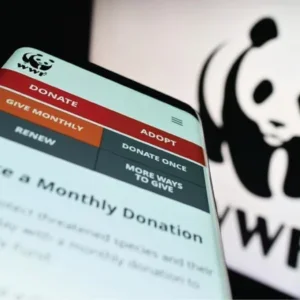What a difference a month can make. The four week period ended June 30 began with a significant advance in price on most categories. The following week was one of the quietest in memory, and then prices fell sharply on all branded material.
Packers began the period achieving sales around $65-65.50 on heavy Texas steers and most packers either countered at their full asking price or accepted bids in limited quantities. Being so far sold ahead, packers were able to reject buyer’s attempts to increase prices, with prices remaining level with the previous week. Interest then waned, with small quantities bid around the $64 mark. With China’s lack of participation, the market dropped further, with packers admitting that they would sell $3-4 below last reported trades.
Branded steers sold well at the beginning of June, mainly to Taiwanese and Chinese tanners. Most sales took place around $64 on 60/62lb averages. But sales then fell below production, although branded steers fared slightly better than Texas. Sales were reported to Asian tanners as low as $60 on an fob basis by the end of June.
Colorados began the period jumping as much as a dollar fifty for no other reason than their relative value to branded steers. By mid-June, tanners were willing to pay $62.50, but prices fell to as low as $58-59 for close in shipment by the end of June.
Heavy native steer trading at the beginning of June was so quiet that no actual transactions were confirmed. Trading picked up to around $68 and stayed at that level mainly due to long-term agreements.
Heavy native heifers began the period as quiet as steers, but interest increased by mid-June with a fairly good volume at $69 sold to US automotive tanners. The selection then quietened again and was generally unavailable towards the end of June, but some good processors sold at $55.50.
Branded heifers were more active to begin with, but then the selection quietened. By mid-June, there were so few branded heifers sold that the market was described as nominal. By the end of June, prices had fallen to as low as $51.50 on the river and $52.50-53 for southwestern productions.
Predictions
There is little evidence suggesting any change in the current market direction affecting heavy Texas, butt branded, branded, Colorado and even heavy native steers. Branded heifers and all cows could be added to this list.
The much heralded packer forward sales positions have now substantially evaporated. With a number of weeks of poor sales, combined with the highest slaughter of the year, it doesn’t take long.
Leather business nearly always slows down at this time of year. Although there is some optimism for a seasonal pick-up in tanners’ business as early as August, or at least by September, nothing is guaranteed. But with tanners seeing reduced leather orders, and without any prospects of a pick-up for at least the next 4/6 weeks, there does not appear to be tanner appetite to add to what appears to be adequate raw stock inventories.
The only thing that might be a positive note for the market is that much of the trade remains optimistic for fall. Shoe manufacturers and retailers also appear to be cautiously hopeful for good sales starting sometime in August and expanding into fall and winter.
Exports
Total raw hide sales for the four week period ended June 30 averaged 445,725. China took 147,325, ahead of South Korea with 131,200. Given that the majority of hides exported to Hong Kong are tanned on the mainland, South Korea is gradually becoming the second largest tanning sector.
Japan averaged 40,150 raw hides for the four-week period, Taiwan recorded 36,150, Hong Kong took 33,675 and Mexico imported 20,000. Italy bought 20,025 raw hides on average and 37,850 calf and kip.
Weekly raw hide exports averaged 449,400 and outstanding sales averaged 4,372,850. It is interesting to note that both sales and shipments of wet-blue to foreign customers have increased 28% this year compared with 2001. The percentage of wet-blue in total exports has also increased and, at the current pace, could end the year with about a 20% share of the total.
Wet-blue sales averaged 106,225 during the four-week period. Hong Kong was the most active buyer with 35,875, while Taiwan imported 19,475, China bought 11,750 and Mexico took 6,900.
Wet-blue shipments averaged 105,100 and outstanding wet-blue sales 598,300.
Wet-blue split sales averaged 621,050lb. Hong Kong was the most active buyer with 136,775lb and Mexico averaged 63,250lb. Weekly split exports averaged 1,409,550 and outstanding split sales averaged 15,225,075.
Based on the quantity of splits shipped at the beginning of June, even without any new business being booked, it could take more than 13 weeks to meet all outstanding delivery obligations. Most split producers are known to be behind on their shipments and these totals exemplify the firmness of this market.






